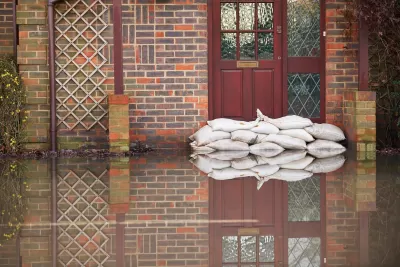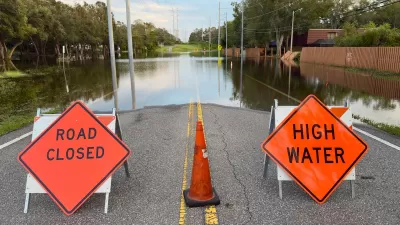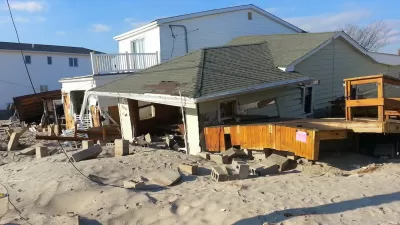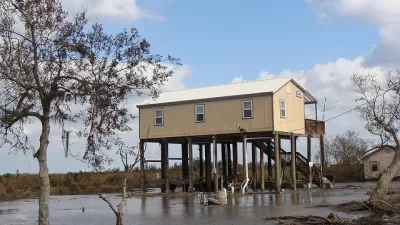A new analysis of the relocation patterns of households that participate in FEMA’s flood buyout program reveals a pattern of increased racial segregation.

New research into what happens to homeowners who participate in the Federal Emergency Management Agency (FEMA) buyout program for flood-prone properties indicates that the program, while it encourages managed retreat in the face of rising sea levels and increased flood risks, “program outcomes look very different depending on the racial makeup of a given neighborhood.”
“The first difference is in who takes buyouts in the first place,” Jake Bittle explains in Grist. “The average majority-white buyout area had an almost 90 percent chance of flooding by 2050, compared to as low as around 50 percent for majority-Black buyout areas. This suggests that white households only participate in the program when the flood risk around them is severe, and otherwise tend to stay put.” This could be due in part to better investment in flood mitigation infrastructure in richer areas or a better chance of selling homes through the private market rather than opting for a FEMA buyout.
Another finding reveals that households from white-majority neighborhoods are more likely to move to other white-majority areas after a buyout. Jim Elliott, lead author of the study, “believes the data shows white families in all neighborhoods using buyout money to move to wealthier and whiter areas.”
The study concludes that “FEMA money seems to grease the wheels of pre-existing processes of white flight and urban segregation, allowing white households to leave behind diversifying neighborhoods and entrench themselves in other white suburbs and towns.”
Elliott suggests the buyout program should provide additional support for low-income households so they can access a wider variety of housing in their new neighborhoods and keep a more detailed record of how the program affects participating households.
FULL STORY: FEMA’s buyout program reduces flood risk. But does it deepen segregation?

Study: Maui’s Plan to Convert Vacation Rentals to Long-Term Housing Could Cause Nearly $1 Billion Economic Loss
The plan would reduce visitor accommodation by 25,% resulting in 1,900 jobs lost.

North Texas Transit Leaders Tout Benefits of TOD for Growing Region
At a summit focused on transit-oriented development, policymakers discussed how North Texas’ expanded light rail system can serve as a tool for economic growth.

Using Old Oil and Gas Wells for Green Energy Storage
Penn State researchers have found that repurposing abandoned oil and gas wells for geothermal-assisted compressed-air energy storage can boost efficiency, reduce environmental risks, and support clean energy and job transitions.

Private Donations Propel Early Restoration of Palisades Playground
Los Angeles has secured over $1.3 million in private funding to restore the Pacific Palisades playground months ahead of schedule, creating a modern, accessible space that supports community healing after recent wildfires.

From Blight to Benefit: Early Results From California’s Equitable Cleanup Program
The Equitable Community Revitalization Grant (ECRG) program is reshaping brownfield redevelopment by prioritizing projects in low-income and environmental justice communities, emphasizing equity, transparency, and community benefits.

Planting Relief: Tackling Las Vegas Heat One Tree at a Time
Nevada Plants, a Las Vegas-based nonprofit, is combating the city’s extreme urban heat by giving away trees to residents in underserved neighborhoods, promoting shade, sustainability, and community health.
Urban Design for Planners 1: Software Tools
This six-course series explores essential urban design concepts using open source software and equips planners with the tools they need to participate fully in the urban design process.
Planning for Universal Design
Learn the tools for implementing Universal Design in planning regulations.
Ascent Environmental
Borough of Carlisle
Institute for Housing and Urban Development Studies (IHS)
City of Grandview
Harvard GSD Executive Education
Toledo-Lucas County Plan Commissions
Salt Lake City
NYU Wagner Graduate School of Public Service





























